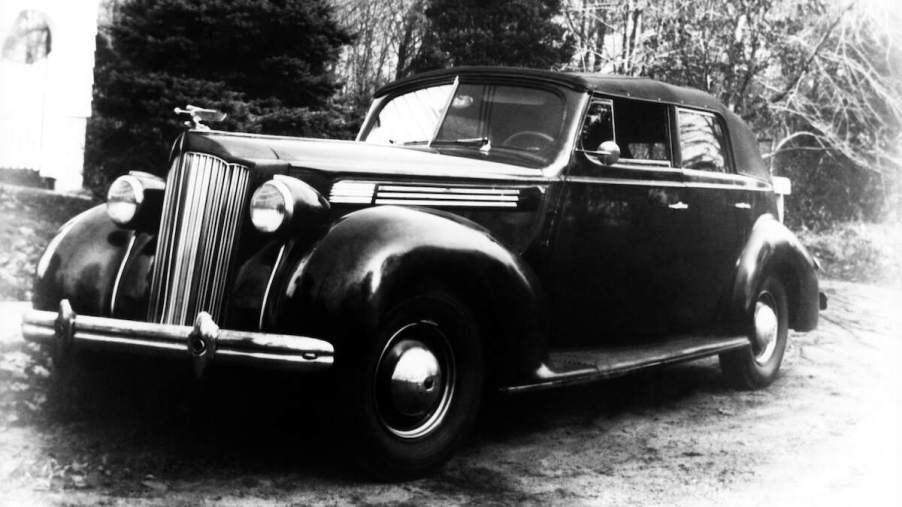
The First Car With Air Conditioning Cost $55,000 in Today’s Dollars
One feature almost everyone takes for granted in cars is air conditioning. It’s standard in nearly every vehicle nowadays, and without A/C, driving in hot and humid places is uncomfortable. But in automobiles’ early days, vehicles had no A/C, and the first car with air conditioning offered the perk at a pricey upcharge.
The 1940 Packard 180 was the first production car with air conditioning
Technically, the 1940 Packard 180 wasn’t the first car with air conditioning. That’s because people in the 1930s were experimenting with homebuilt, custom A/C units in their cars. That said, the 1940 Packard 180 is the first production car with A/C as an optional feature.
At the time, air conditioning was such a new feature that the term “air conditioning” wasn’t even used yet, Mac’s Motor City Garage explains. Instead, the industry term was “mechanical refrigeration,” which later became “weather conditioner” before people finally settled on “air conditioning.” And while there were differences between the A/C in the Packard 180 and the systems in modern cars, they both operate on similar principles.
One of the main differences is that the Packard 180’s A/C unit was mounted behind the rear seats. That meant the cold air blew toward the rear passengers’ necks, and the unit took up space in the trunk. It also had some problems that modern A/Cs don’t have. For instance, because the Packard 180’s A/C recirculated the air in the cabin because it had no fresh-air intake.
The first car with air conditioning was expensive
Overall, the 1940 Packard 180’s air conditioner did its job well. However, as with any first-of-its-kind feature, it was expensive. That shouldn’t be a surprise because Packard was a luxury automaker. The Packard 180 retailed for $2,228. Drivers who wanted A/C had to pay an extra $275 to $310.
For context, the average annual wage in 1940 was $1,368, so the car cost more than the average American’s yearly salary. Adding the A/C unit alone would’ve eaten up four months of the average American’s wages.
Adjusted for inflation, the 1940 Packard 180 cost about $48,000 in today’s dollars. Adding A/C increased this historic car’s purchase price to about $55,000.
A/C soon became a standard feature
Due to that hefty price tag and the fact that the Packard 180 was a luxury vehicle, few people got to relax in an air-conditioned car in the 1940s. However, A/C was an appealing feature, so automakers improved it and made it cheaper. In 1954, car companies moved the A/C unit away from the rear seats and placed the air blower in the dashboard.
That design choice caught on, and they were similar to the dash-mounted units still popular today. By 1970, half of all cars sold in America had A/C as a standard feature. That percentage continued growing rapidly, and finding a car without standard air conditioning is difficult nowadays.



